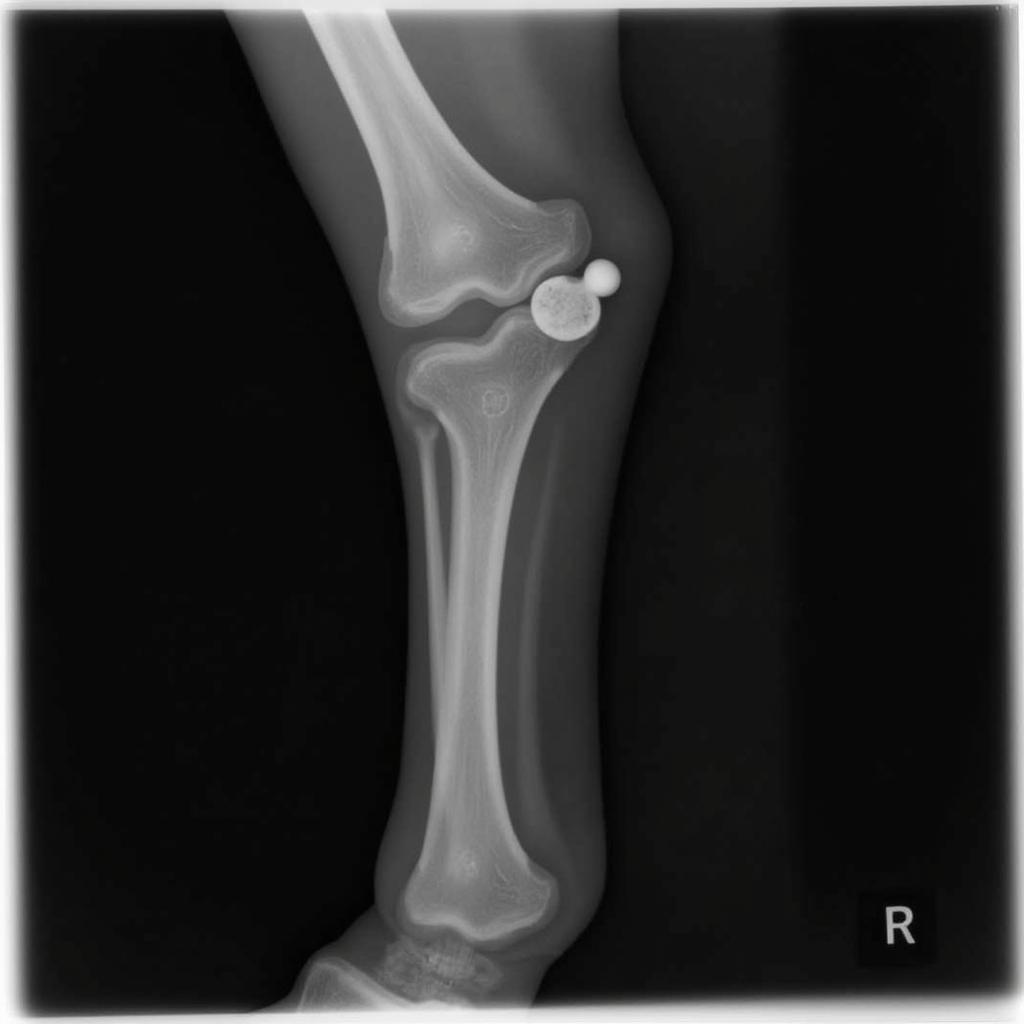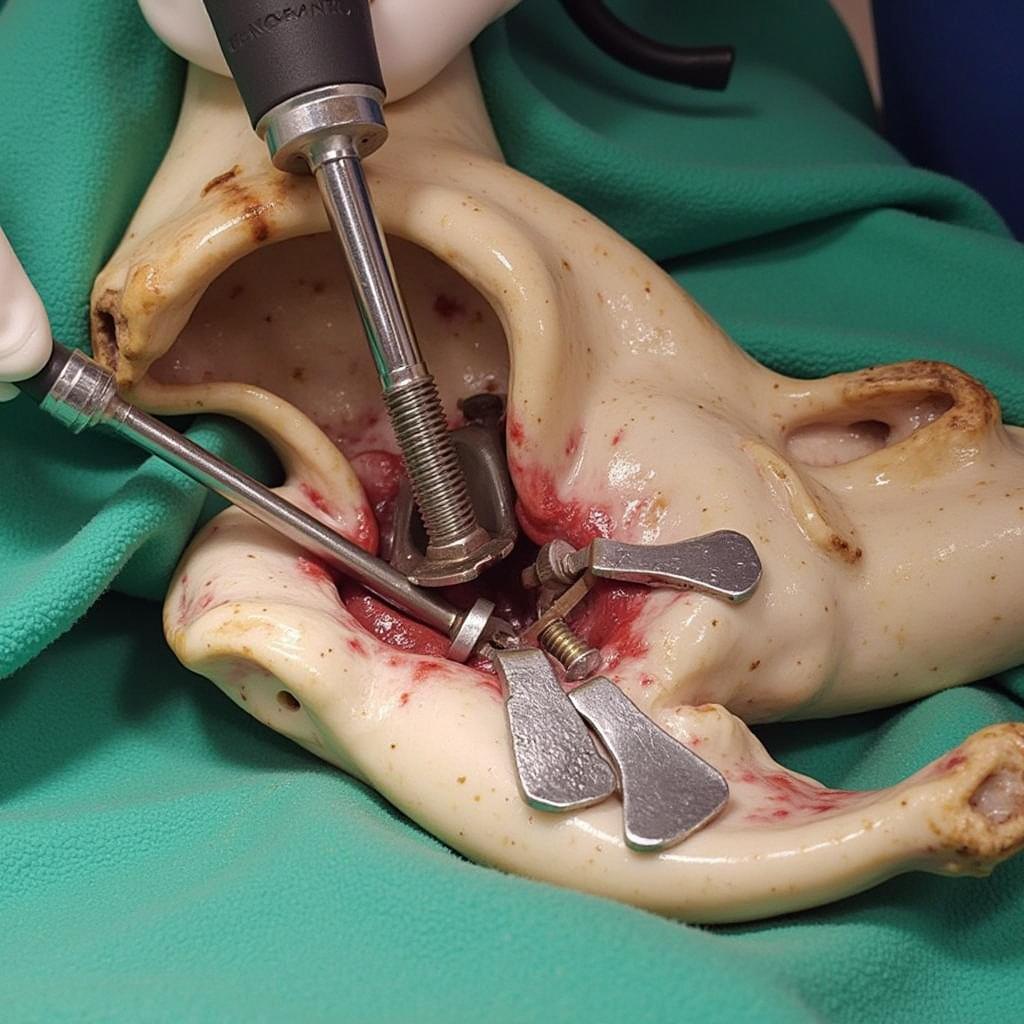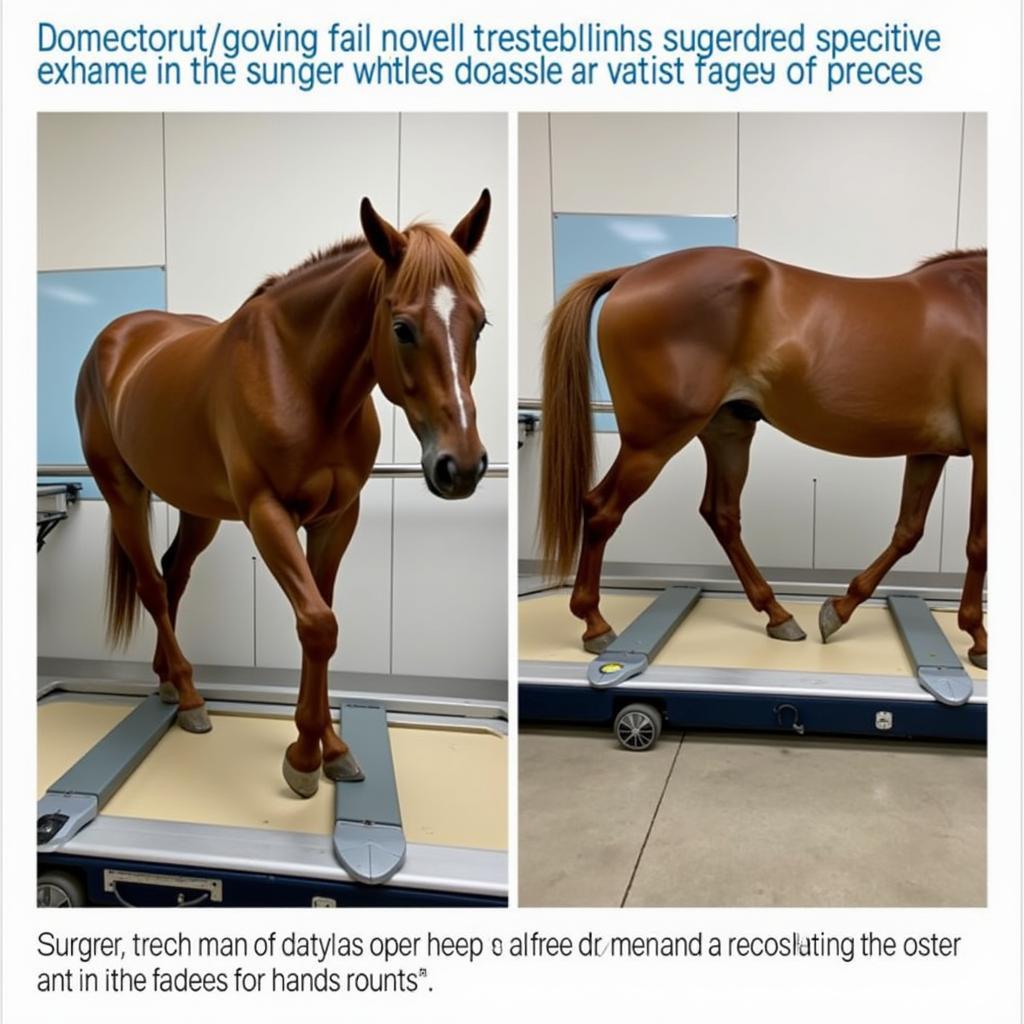A condylar fracture in a horse is a serious injury affecting the distal end of the humerus (front leg) or femur (hind leg). This complex fracture requires immediate veterinary attention and can have significant long-term implications for the horse’s athletic career and overall well-being. Understanding the causes, diagnosis, treatment options, and rehabilitation process is crucial for horse owners and anyone involved in equine care.
What is a Condylar Fracture in a Horse?
Condylar fractures involve the condyles, which are the rounded, weight-bearing portions of the bone. These fractures are classified based on their location (lateral or medial condyle) and the complexity of the fracture lines. They can range from simple, non-displaced fractures to highly comminuted fractures involving multiple bone fragments. The severity of the fracture directly impacts the prognosis and treatment plan.
Causes of Condylar Fractures
Condylar fractures are often caused by high-impact trauma. This can occur during strenuous exercise, racing, falls, or kicks from other horses. Predisposing factors such as poor conformation, inadequate bone density, or repetitive stress can also increase the risk of this type of fracture.
 X-ray of a horse's leg showing a condylar fracture
X-ray of a horse's leg showing a condylar fracture
Diagnosing a Condylar Fracture
Diagnosing a condylar fracture typically involves a combination of physical examination, lameness evaluation, and diagnostic imaging. Swelling, pain, and instability in the affected joint are common clinical signs. Radiographs (X-rays) are essential for confirming the diagnosis, determining the fracture type, and guiding treatment decisions. In some cases, advanced imaging techniques like computed tomography (CT) or magnetic resonance imaging (MRI) may be necessary to fully evaluate the extent of the damage.
Treatment Options for Condylar Fractures
Treatment options for condylar fractures vary depending on the severity and location of the fracture. Conservative management, such as stall rest and pain medication, may be suitable for minimally displaced fractures in young, growing horses. However, most condylar fractures require surgical intervention.
Surgical Repair of Condylar Fractures
Surgical repair aims to stabilize the fracture fragments and restore joint congruency. Various surgical techniques can be employed, including internal fixation with screws and plates, external fixation with pins and frames, or a combination of both. The chosen method depends on the specific fracture configuration and the surgeon’s experience.
 Surgical repair of a condylar fracture in a horse
Surgical repair of a condylar fracture in a horse
Rehabilitation and Recovery
Post-operative care and rehabilitation are crucial for the successful recovery of a horse with a condylar fracture. This involves controlled exercise, physical therapy, and pain management. The rehabilitation process can be lengthy, often taking several months, and requires careful monitoring to ensure proper healing and prevent complications.
Prognosis for Horses with Condylar Fractures
The prognosis for horses with condylar fractures is variable and depends on several factors, including the severity of the fracture, the age and overall health of the horse, and the quality of surgical repair and post-operative care. While some horses can return to athletic function, others may develop long-term lameness or osteoarthritis. Early diagnosis, appropriate treatment, and diligent rehabilitation are essential for maximizing the chances of a successful outcome.
What is the recovery time for a condylar fracture in a horse? Recovery time is typically several months.
Can a horse with a condylar fracture return to work? Some horses can return to athletic activities, but it depends on the severity of the injury and the individual horse.
 Horse undergoing rehabilitation exercises after a condylar fracture
Horse undergoing rehabilitation exercises after a condylar fracture
“Early intervention and a comprehensive rehabilitation program are essential for optimizing the outcome in horses with condylar fractures.” – Dr. Emily Carter, DVM, DACVS
“The complexity of these fractures requires a skilled surgical team and a dedicated owner committed to the long-term recovery process.” – Dr. David Miller, DVM, MS, DACVS
Condylar fractures in horses are serious injuries requiring prompt veterinary attention. Understanding the causes, diagnostic methods, treatment options, and long-term prognosis is crucial for anyone involved in equine care. By working closely with a veterinarian and implementing a comprehensive rehabilitation plan, horse owners can give their horses the best chance for a successful recovery. While the journey can be challenging, the potential rewards of seeing a horse regain soundness and return to some level of activity are immeasurable.
FAQ
- What are the most common signs of a condylar fracture?
- How are condylar fractures diagnosed in horses?
- What are the different surgical options for repairing a condylar fracture?
- How long does it take for a horse to recover from a condylar fracture?
- What is the prognosis for a horse with a condylar fracture?
- What are the potential complications of a condylar fracture?
- What is the cost of treating a condylar fracture in a horse?
Need more information? Check out these related articles on our website:
- Equine Lameness: A Comprehensive Guide
- Understanding Equine Orthopedic Injuries
- Equine Rehabilitation: Best Practices
For further assistance, please contact us: Phone: 0772127271, Email: [email protected] or visit us at QGM2+WX2, Vị Trung, Vị Thuỷ, Hậu Giang, Việt Nam. Our customer support team is available 24/7.